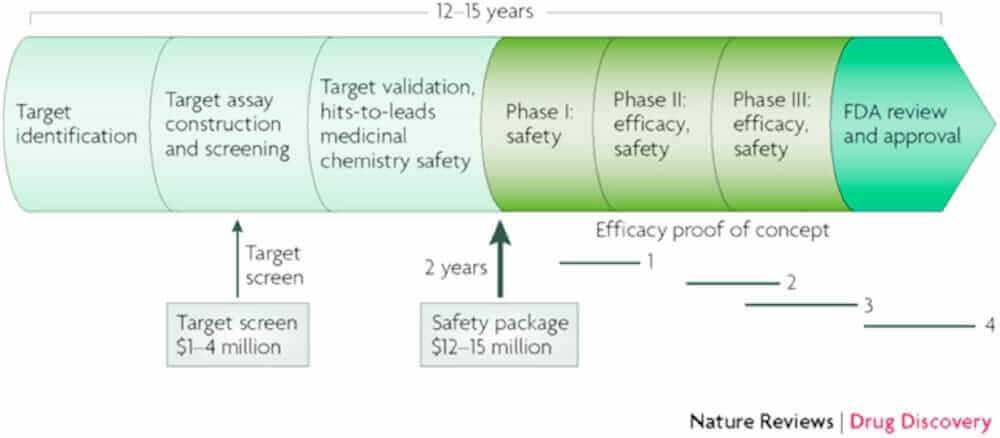
Drugs are molecules that modulate protein receptors in human
cells or pathogens, treating a disease. They are notoriously difficult to discover and develop, and recent
industrial estimates suggest that the cost of bringing a drug to market is
about four billion dollars. While there is reason to question this estimate,
there is no doubt that developing a new therapeutic is hugely expensive,
requiring a vertically integrated research enterprise. It often begins with the discovery of a new
receptor in the cell, proceeds to the discovery of molecules that can modulate
that receptor, continues to the optimization of those molecules for activity in
ever more complex animal models, for specificity, lack of toxicity, stability,
and dosage form. Only when shown to be
effective and safe in representative animal models are the molecules advanced
into human clinical trials, which can demand testing in tens of thousands of
patients over several years (Figure 1).
Because of the high cost and great risks of drug discovery,
basic research only occasionally leads directly to a drug, (though there are
important examples where it has), but it makes crucial contributions at almost
every point of the drug discovery pipeline (Figure 1) Nowhere is this
truer than at QBI UCSF, where the modern molecular era of drug discovery was
partly invented. UCSF investigators are
developing technologies for discovering new drug targets, understanding their
mechanism of action, and finding new molecules that modulate them. Methods to discover these early drug candidates
include molecular design, computer-based drug discovery, empirical and
phenotypic screening, and by protein engineering. For several of these, the field depends on
technologies, databases and libraries that were developed and are hosted by the
university. The development of CRISPR
technologies has enabled the design of elegant animal models to test the
mechanisms of these drugs, and to understand their off-target liabilities. UCSF investigators are also developing new
methods to predict and understand how drugs permeate membranes and barriers in
the body, and the effects of the excipients that are co-formulated with drugs,
and often make up most of the weight of pills.